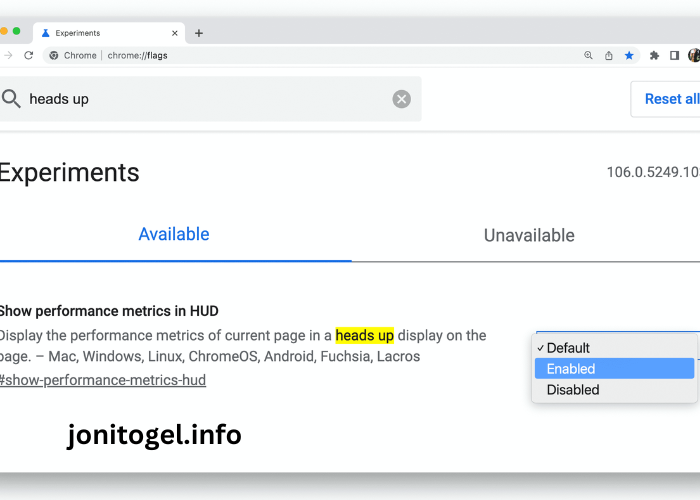As an avid Chrome user, you’ve probably heard of the mysterious chrome://Flags page, but may not fully understand its purpose or potential. This hidden treasure trove within the Chrome browser offers a wealth of experimental features and advanced options that can greatly enhance your browsing experience. In this comprehensive guide, we’ll explore the ins and outs of chrome://Flags, helping you navigate this powerful tool and unlock the true potential of your Chrome browser.
Understanding the Purpose of chrome://Flags
The chrome://Flags page is a hidden section of the Chrome browser that provides access to a variety of experimental features and advanced settings. These features are still in development and are not yet ready for prime-time inclusion in the stable version of Chrome.
By accessing chrome://Flags, you can test and enable these experimental features, giving you a sneak peek at the future of Chrome while also providing valuable feedback to the Chrome development team.
How to Access chrome://Flags
Accessing the chrome://Flags page is a simple process. Here’s how you can get started:
- Open your Chrome browser.
- In the address bar, type chrome://flags and press Enter.
- You’ll be greeted with a page filled with various experimental features and settings.
Exploring the Different Experimental Features in chrome://Flags
The chrome://Flags page is a treasure trove of experimental features, each with its own unique purpose and potential impact on your browsing experience. Some of the categories you’ll find include:
- Performance Enhancements
- Security and Privacy Improvements
- User Interface Customizations
- Accessibility Features
- Developer Tools and Debugging Options
Take the time to explore the different sections and read the descriptions of each feature to understand how they can benefit you.
Benefits of Enabling Experimental Features in chrome://Flags
By enabling experimental features in chrome://Flags, you can enjoy a range of benefits, including:
- Enhanced Performance: Many of the experimental features in chrome://Flags are designed to improve the overall performance and speed of your Chrome browser.
- Improved Security and Privacy: Some of the experimental features focus on enhancing the security and privacy of your browsing experience.
- Personalized User Experience: The chrome://Flags page offers a wealth of customization options, allowing you to tailor your Chrome browser to your specific needs and preferences.
- Early Access to New Features: By enabling experimental features, you’ll get a sneak peek at the future of Chrome, giving you a chance to provide valuable feedback to the development team.
Risks and Precautions when Using chrome://Flags
While the chrome://Flags page offers a wealth of exciting possibilities, it’s important to exercise caution when enabling experimental features. Some key considerations include:
- Stability Issues: Experimental features may not be as thoroughly tested as the stable version of Chrome, which could lead to crashes, bugs, or other stability problems.
- Performance Impacts: Enabling certain experimental features may have a negative impact on your browser’s performance, so it’s important to monitor the effects and be prepared to disable them if necessary.
- Compatibility Concerns: Some experimental features may not be compatible with certain websites, extensions, or other software you use, so it’s important to test them thoroughly before relying on them.
To mitigate these risks, it’s recommended to create a separate Chrome profile dedicated to testing experimental features, ensuring that any issues don’t impact your primary browsing experience.
Popular Experimental Features in chrome://Flags
While the chrome://Flags page is filled with a wide range of experimental features, some of the most popular and impactful ones include:
- Chrome Duet: Enhances the user interface with a bottom-aligned toolbar for easier one-handed use.
- Tab Groups: Allows you to organize your open tabs into collapsible groups for better organization and multitasking.
- Reading List: Provides a dedicated space to save articles and web pages for later reading.
- Chrome Sync: Enables the synchronization of your Chrome settings, bookmarks, and browsing data across multiple devices.
- Performance Enhancements: Features like “Smooth Scrolling” and “Accelerated 2D Canvas” can improve the overall responsiveness and fluidity of your browsing experience.
How to Troubleshoot Issues Related to chrome://Flags
If you encounter any issues or problems while using the experimental features in chrome://Flags, there are several steps you can take to troubleshoot and resolve them:
- Disable the Problematic Feature: If a specific experimental feature is causing issues, simply navigate back to the chrome://Flags page and disable the feature.
- Reset Chrome to Default Settings: If you’re experiencing persistent problems, you can reset Chrome to its default settings by navigating to chrome://settings/reset and clicking the “Restore settings to their original defaults” button.
- Check for Known Issues: Before enabling a new experimental feature, be sure to check the Chrome support forums or community discussions for any known issues or workarounds.
- Provide Feedback: If you encounter a problem with an experimental feature, consider providing feedback to the Chrome development team through the appropriate channels. Your input can help improve the feature and ensure a better experience for all Chrome users.
chrome://Flags vs. Chrome Extensions: Understanding the Difference
While both chrome://Flags and Chrome extensions offer ways to enhance your browsing experience, they serve different purposes and have distinct characteristics:
- chrome://Flags: Provides access to experimental features that are still in development and may not be ready for widespread use. These features are often more advanced and targeted towards power users or those seeking to push the boundaries of their Chrome experience.
- Chrome Extensions: Are standalone software programs that you can install to add specific functionalities or customizations to your Chrome browser. Extensions are generally more stable, user-friendly, and intended for broader adoption by the Chrome user community.
The choice between using chrome://Flags or Chrome extensions will depend on your specific needs, technical expertise, and willingness to experiment with potentially unstable features.
Conclusion
The chrome://Flags page is a treasure trove of experimental features that can transform your Chrome browsing experience. By understanding its purpose, exploring the available options, and exercising caution, you can unlock a world of enhanced performance, improved security, and personalized customization.






